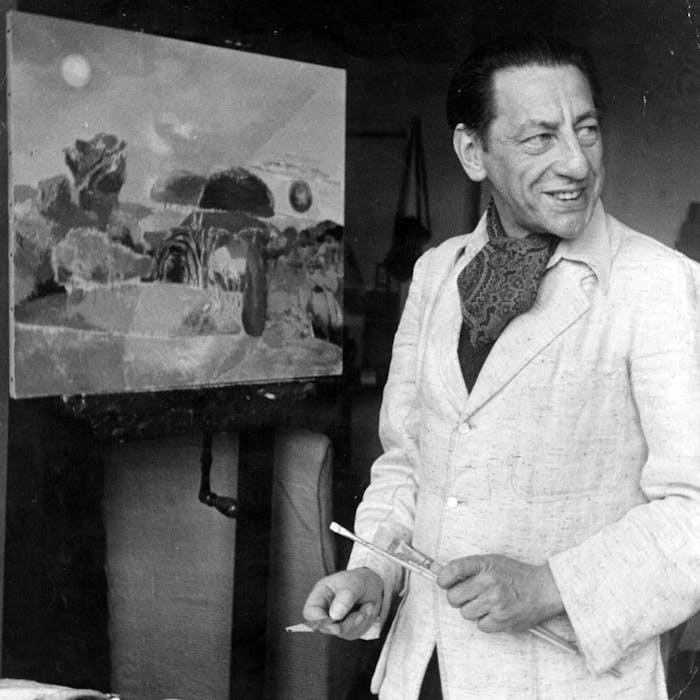
Paul Nash - surrealist landscape war artist
Paul Nash was a British painter, printmaker, illustrator, and photographer who achieved recognition for the war landscapes he painted during both world wars. Nash was among the most important landscape artists of the first half of the twentieth century.
He played a key role in the development of Modernism in English art.
Nash was born in 1889 in London, but grew up in Buckinghamshire where he developed a love of the landscape. He entered the Slade School of Art but was poor at figure drawing and concentrated on landscape painting. Nash had shows in 1912 and 1913, sometimes with his brother John, largely devoted to drawings and watercolours of brooding landscapes, influenced by the poetry of William Blake and the paintings of Samuel Palmer and Dante Gabriel Rossetti.
In 1914 he enlisted in the Artists’ Rifles to serve in World War I. Appointed an official war artist by the British government in 1917, he created scenes of war such as The Menin Road (1919), a shattered landscape painted in a semi-abstract, Cubist-influenced style.
After the war Nash lived in Kent, where he painted seascapes and landscapes in cool yet vibrant colours. In the late 1920s he became interested in Italian artist Giorgio de Chirico’s mysterious landscapes, and he subsequently experimented with Surrealist techniques as well as abstraction. His compositions became increasingly dreamlike and illogical.
Nash was largely responsible in 1933 for founding Unit One, a group of British artists—including abstract painter Ben Nicholson and the sculptors Barbara Hepworth and Henry Moore—who wanted to promote avant-garde art in England. He was one of the organisers of the International Surrealist Exhibition in London in 1936, and he also exhibited his work there.
In 1940 Nash again served as an official war artist for England. One of his best-known paintings of World War II was Totes Meer (1940–41; “Dead Sea”), in which he depicted a field of wrecked warplanes as turbulent ocean waves. In his last paintings he turned to an imaginative poetic symbolism that included images of flowers and references to mythology and the seasons.
In September 1944 Nash's public commitments came to an end and he spent the remaining eighteen months of his life in, by his own words, 'reclusive melancholy'. In these final months, Nash produced a series of paintings, including Flight of the Magnolia (1944), which he called 'Aerial Flowers' that combined his fascination with flying and his love of the works of Samuel Palmer.
Nash died in his sleep of heart failure, as a result of his long-term asthma, on 11th July 1946, at Boscombe in Hampshire (now Dorset) and was buried in the churchyard of St Mary the Virgin, Langley in Buckinghamshire (now Berkshire). The Egyptian stone carving of a hawk, that Nash had painted in Landscape from a Dream, was placed on his grave.
A memorial exhibition and concert for Nash was held at the Tate Gallery in March 1948.
Further reading
Links to external websites are not maintained by Bite Sized Britain. They are provided to give users access to additional information. Bite Sized Britain is not responsible for the content of these external websites.
